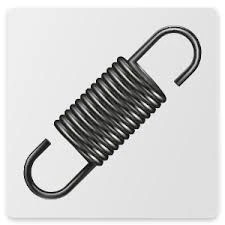
- Mobile Phone
- +8613931874955
- sales@cntcmetal.com
Cost Analysis for Cattle Fencing Solutions in Today's Market
Understanding Cattle Fence Prices A Comprehensive Guide
When it comes to managing livestock, one of the most crucial investments a rancher or farmer can make is in quality fencing. Cattle fencing not only provides security for your animals but also ensures their safety as well as the safety of your crops and property. However, understanding cattle fence prices can be a bit complex, given the variety of materials, styles, and installation options available in the market today. In this article, we will explore the factors that influence cattle fence pricing, the types of fencing available, and some cost-effective solutions for ranchers.
Factors Influencing Cattle Fence Prices
1. Material Type The material used in the construction of cattle fencing significantly affects the price. Common materials include barbed wire, woven wire, electric fencing, and high-tensile wire. For example, barbed wire tends to be the most economical option, while high-tensile fencing offers durability and longevity at a higher cost. Woven wire, while more expensive than barbed wire, provides better containment and is often used for larger ranches.
2. Height and Gauge The height and thickness (gauge) of the fencing can also influence the cost. Cattle fencing typically ranges from 4 to 6 feet in height. Thicker wires or taller fences will generally increase the overall price due to the increased amount of material needed.
3. Installation The method of installation significantly impacts the cost as well. DIY installation can save money, but it requires time, effort, and knowledge of proper techniques. Hiring professionals will ensure the job is done correctly, but it may incur additional costs.
4. Terrain Type The landscape where the fence will be installed can affect pricing as well. Rocky or uneven terrain may require additional posts, specialized equipment, and labor, which can drive up costs.
5. Post Material The choice of posts—wood, metal, or vinyl—can also contribute to the fence's overall price. Treated wood or metal posts might be more expensive upfront but can provide durability that pays off in the long run.
6. Local Market Conditions Prices can vary widely based on local supply and demand. In some regions, materials may be more expensive due to shipping costs or availability, which can substantially affect the overall project budget.
Types of Cattle Fencing
cattle fence price

1. Barbed Wire Fencing This is one of the most common and cost-effective methods for cattle fencing. Barbed wire fences are straightforward to install and effective for containment. However, caution must be used as barbed wire can injure animals if not erected correctly.
2. Woven Wire Fencing Woven wire fence offers excellent containment and is ideal for keeping cattle in and predators out. Although it is more expensive than barbed wire, its durability and strength make it a worthwhile investment for many ranchers.
3. Electric Fencing Electric fences provide a cost-efficient and safe way to contain cattle. They deter animals from pushing against or jumping over the fence. The initial setup cost can be higher, but maintenance is often easier and less frequent.
4. High-Tensile Fencing This type of fencing is made from high-strength wire and is designed to withstand the pressure from cattle and environmental stressors. Though it can be more expensive, it requires fewer posts and less maintenance over time.
Cost-Effective Solutions
For those looking to save money, consider these strategies
- Research and Compare Prices When planning your fencing project, take the time to research different vendors and compare prices. Buying in bulk can often lead to discounts.
- DIY Installation If you have the skills and tools for installation, consider doing it yourself. This can save a significant amount of money.
- Consider Used Materials Sometimes, you can find used fencing materials that are still in good condition. Just ensure they're safe for your cattle.
In conclusion, understanding cattle fence prices requires careful consideration of many factors including the type of material, installation method, and local conditions. By making informed decisions, ranchers can secure their livestock while staying within budget. Investing in quality fencing is not just about immediate costs; it’s about long-term safety, maintenance, and peace of mind in cattle management.
share:
-
Your Source for Concrete Wall Ties and Masonry AccessoriesNewsJul.10,2025
-
Unlocking the Power of Iron Wire for Every ProjectNewsJul.10,2025
-
Explore Advanced Chain Wire and Stainless Steel Mesh FencingNewsJul.10,2025
-
Discover the Benefits of Annealed Wire ProductsNewsJul.10,2025
-
Discover China Stainless Steel Wire Mesh SolutionsNewsJul.10,2025
-
Build with Confidence Using High-Performance Masonry AccessoriesNewsJul.10,2025
-
Why Sacrificial Formwork Is Redefining Underground ConstructionNewsJun.06,2025



















